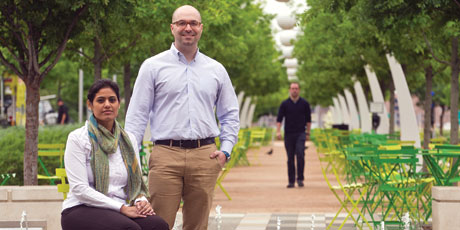Acid Reflux
A Natural Solution to the Unnatural
UT Arlington team explores ways to turn back pollution's effects

Sophia Passy
When it comes to fixing streams polluted by acid rain, UTA biologists say there may be a natural solution. But for it to work, policymakers will have to give Mother Nature a push in the right direction.
Sophia Passy, associate professor of biology, and Katrina Pound, a recent Ph.D. graduate who worked in Dr. Passy’s lab, believe that watershed wetlands could serve as a natural source for the improvement of streams polluted by acid rain.
The duo draws their conclusions from research they conducted with the U.S. Geological Survey. For that project, they looked at 637 water samples from nearly 200 streams in the Adirondack Forest Preserve. Scientists have long linked industrial pollution to the acidification of streams in this 6-million-acre region in northeastern New York. (Acidification involves the depositing of inorganic acids that are harmful to the biodiversity of streams, lakes, and soils.) The researchers found that when water from the streams was connected to wetlands, it had a higher organic content. That in turn helped reduce the harmful effects of the inorganic content deposited by the
acid rain.
“Ecologists and government officials have been looking for ways to reduce acidification and aluminum contamination of surface waters for 40 years,” Passy says. “While Clean Air Act regulations have fueled progress, the problem is still not solved. We hope that future restoration efforts in acid streams will consider the use of wetlands as a natural source of stream health improvement.”

















